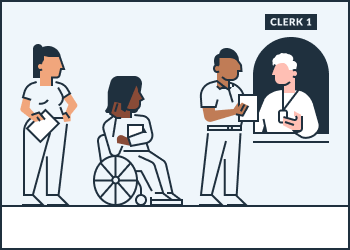
If you and your child’s other parent need help to set up a parenting plan for your child, one of you can ask a judge for an order about child custody and parenting time (also called visitation). You can also ask the judge to change an order if you already have one.
PRINT EMAILLearn about custody and parenting time, so you understand what the law says and what type of orders you can ask for.
To make this request, you need a family law court case. If you don’t have one, you will have to open one at the same time. If you need help opening a case:
If you are not sure if you have a family law court case, contact the clerk in your court or the Family Law Facilitator or Self-Help Center.

You can explain both on item 2, on page 2, and use item 10 on page 4, “Facts to Support,” if you need more space.
If you're asking to change an existing order, make sure you use the same case number as your existing order. And fill out item 2(d) on page two with details of the order you're trying to change.
Attach forms, like the Child Custody and Visitation (Parenting Time) Application Attachment (form FL-311), to give more details about the orders you want, like what schedule you want each day and the place you will do custody exchanges.
What are examples of Facts to Support my request (item 10)?Item 10, “Facts to Support,” on Page 4 asks you to explain why the court should order the parenting plan that you are asking for. Write down the facts, not just opinions, that support what you’re telling the court. If you are asking to change an order, you need to explain what has changed since the judge made the last order.
For example, if your child has been struggling in school and you are home after school to help with their homework (and the other parent is not), you can explain that as a reason why you want your child on school nights.
If there is a document or other information that supports what you say (like school grades, a letter from a counselor, your work schedule), attach that to your request.
If you need more space, check the box that says, “Attachment 10.” You can use Attached Declaration (form MC-031) or Attachment to Judicial Council Form (form MC-025).
The form says Petitioner and Respondent. Which am I?The petitioner is the person who started the family law case initially. The respondent is the other parent. For example, if you are filing this Request for Order but the other parent was the one who started the case at the very beginning, you are the respondent.
For example, if you also need a child support order, you may be able to use the same form to ask for a child support and custody order. This saves you a filing fee. And, the court can decide both issues at the same time. Read about the other type of order to be sure you can ask for the order in this case.
After you’ve filled out, signed, and dated your Request for Order and any attachments, make 2 copies of the forms and any attachments.

If you don't have these ready now, you can file them later.
There may be other fees, like if you're asking for an emergency (ex parte) order or changing an order.

If this is the first paper you've filed in your case, the fee may be more. Learn more
If these are the first papers you’ve filed in the case, there may be a $430-$450 “first paper” filing fee. If you can't afford the fee, you can ask for a fee waiver.
You will have to go to mediation or child custody recommending counseling before you see the judge.
Can I file my forms by mail? Or online?Yes, you can file by mail. Mail the original and 2 copies to the clerk. You need to include the filing fee and a self-addressed stamped envelope so the clerk can mail your copies back to you. If you do not include a self-addressed, stamped envelope you will have to go to the courthouse to pick up your copies.
Some courts allow online filing (called e-filing). You can find out if your court has online filing by visiting your court’s website.